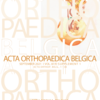No change in the use of alcohol among hip fracture patients over a 12-year period : a prospective study in south-eastern Finland
Cohort ; hip fracture ; prospective study ; alcohol use ; ethanol concentration
Published online: Oct 08 2021
Abstract
Excess alcohol use is a risk factor for hip fractures. The objectives of this study were to analyse serum ethanol levels among hip fracture patients and to compare the results with a similar study conducted 12 years ago in the same two hospitals covering the same geographic area.
A prospective cohort comprising 245 Caucasian hip fracture patients was enrolled in the emergency rooms of two acute hospitals in south-eastern Finland over a 12-month period in 2015-2016. The serum ethanol concentrations (≥0.101 g/L) were compared with the corresponding concentrations of a similar cohort analysed in the same two hospitals 12 years previously. Liver enzymes and mean corpuscular volume (MCV) were measured. The patients were asked about their use of alcohol during the 24 h period prior to the fracture.
Of the 245 patients, 70% were women with a mean age of 81 years, whereas the mean age of the men was 78 years. In the total data, 5% of patients had a positive ethanol level. At the time of admission, 10% of the patients reported having used alcohol within the previous 24 h. Both results were in line with the results obtained 12 years ago. For all the tested enzymes except alanine aminotransferase (ALT), differences were recorded between the mean values in alcohol-positive and -negative females and males.
Only 5% of the hip fracture patients had positive serum ethanol concentration on the day of admission to the emergency department. This result was similar to that obtained 12 years earlier.
